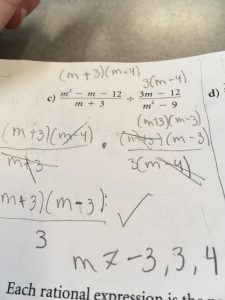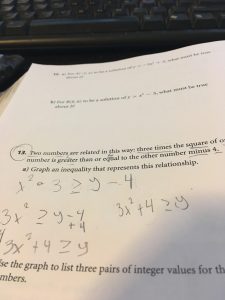This week I learned the cosine law and how to solve triangles while using the law. The cosine law is used to solve the third side length of a triangle. There are 2 formulas for the cosine law one is used to solve a side length and the other formula is used to solve a missing angle or \ theta. The formula used for the side length is a2 = b2 + c2 – 2bc cos A. The beauty of the cosine formula is that you can re arrange and find any letter you want without making any negative variables so it makes it easier. The angle formula is the formula that I used for my example to figure out an angle. And with cosine its not only solving right angle triangles but other ones as well. And if the triangle has 2 angles given to you then you can subtract the 2 angles from 180 to get the third angle so you don’t need to use the cosine law at all. In my example I had to find 2 angles using the rearranged cosine law formula and I substituted the letters to make it less confusing for me. I found solving triangles with the cosine law pretty easy because you just need to substitute the letters that you are looking for.

My example with the rearranged cosine formula. And after you get the answer make sure to inverse cosine to get the angle!








